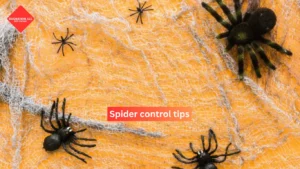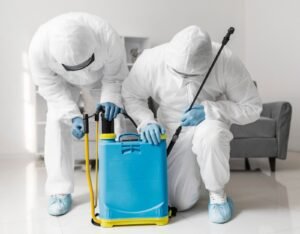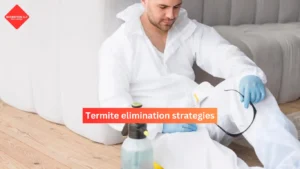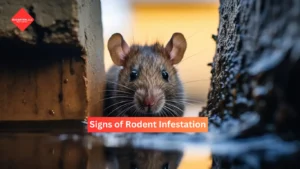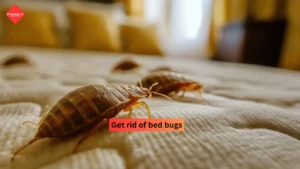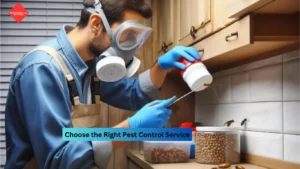Bed bugs are tiny, nocturnal pests that can cause significant stress and discomfort. Their ability to hide in cracks and crevices makes them particularly difficult to detect, and they can spread quickly if left unchecked. If you’re facing a bed bug infestation, acting swiftly is crucial to ensure you don’t end up with a bigger problem on your hands. In this guide, Bugnation will help you identify bed bugs, understand their behavior, and most importantly, provide practical steps to get rid of bed bugs fast.
What Are Bed Bugs?
Bed bugs (Cimex lectularius) are small, reddish-brown insects that feed on the blood of humans and animals. They are often about the size of an apple seed—roughly 1/4 inch long—making them hard to spot unless you know what to look for.
These pests tend to be most active at night when they emerge from their hiding spots to feed on their unsuspecting victims. Bed bugs can thrive in mattresses, furniture, and even cracks in walls and baseboards, making them tough to fully eradicate without a targeted approach.
How to Identify Bed Bugs
Before you start working to get rid of bed bugs, you need to make sure you’re dealing with them. Bed bug infestations are more common than most people realize, so learning how to spot them early can save you time and frustration.
1. Visible Bed Bugs
The first sign of a bed bug problem is often the bugs themselves. Check for small, reddish-brown insects near the seams of your mattress or furniture cushions. Bed bugs like to hide during the day, but they leave traces of their presence. Look for:
- Live bed bugs: Usually visible on or around your bed, especially in seams or creases of the mattress and sheets.
- Eggs or shells: Bed bugs lay tiny white eggs, and as they grow, they shed their skins.
2. Bite Marks on Your Skin
Bed bug bites often appear in clusters or a line, typically on exposed areas of your skin, like arms, legs, or neck. They may cause itching or irritation, but not everyone reacts to bed bug bites the same way. If you wake up with unexplained bites or red, inflamed skin, it could be a sign that bed bugs are active in your home.
3. Blood Stains or Fecal Spots
When bed bugs feed, they can leave small blood stains on your sheets or pillowcases. If you notice these stains, it’s a good indicator of an infestation. Bed bug droppings also leave tiny dark spots, which may look like ground pepper. These can be found near areas where the bugs hide.
4. Musty Odor
An overrun bed bug infestation often gives off a musty or sweet odor. This scent is caused by the bugs’ scent glands and can become stronger the more severe the problem gets.
Steps to Get Rid of Bed Bugs Quickly
Now that you’ve confirmed that bed bugs are indeed the problem, it’s time to take action. While eliminating bed bugs requires persistence and attention to detail, it’s definitely possible to tackle the issue head-on. Here’s how you can get rid of bed bugs quickly and effectively:
1. Clean and Declutter Your Home
Bed bugs love hiding in cluttered spaces. Start by clearing out unnecessary items, especially in areas like the bedroom, closet, and around the bed. This will help you get a clear view of where the bed bugs are hiding and allow for better treatment.
Next, vacuum thoroughly, paying extra attention to the seams, edges, and corners of your mattress, furniture, and floors. Dispose of the vacuum bag immediately to avoid reintroducing the pests back into your home.
2. Wash and Heat-Treat Bedding and Clothing
Washing and drying your bedding and clothing on the highest heat setting will kill any bed bugs and eggs present. You should do this for all sheets, blankets, pillowcases, clothing, and other fabric items that may have come into contact with bed bugs.
For items that cannot be washed, such as shoes or stuffed animals, consider placing them in the dryer in a high-heat setting for 30 minutes.
3. Use Bed Bug Sprays and Powders
There are numerous commercial bed bug sprays and powders available that can help you get rid of bed bugs quickly. Look for products that are specifically designed for bed bugs, as general insecticides may not be effective against them.
- Sprays: These can be applied directly to cracks, crevices, and areas where bed bugs are hiding.
- Powders: Diatomaceous earth or silica gel powders can be sprinkled around your bed, baseboards, or furniture. They work by dehydrating bed bugs, eventually killing them.
Be sure to follow the manufacturer’s instructions for safe and effective use of these products.
4. Seal Cracks and Crevices
Bed bugs love to hide in cracks and crevices. Inspect your home for any gaps in the walls, baseboards, and even the furniture. Use caulk or sealant to fill in any cracks that may serve as hiding places for these pests. Additionally, consider placing bed bug interceptors (small devices placed under the legs of your bed or furniture) to trap any bed bugs that try to climb up.
When to Call a Professional
While DIY methods can be effective, sometimes bed bug infestations are just too severe for a homeowner to handle alone. If the infestation persists after your efforts or if you feel overwhelmed by the situation, it might be time to call in a professional pest control service.
A professional will have the expertise, experience, and tools needed to identify the full extent of the infestation and provide more advanced treatments, such as fumigation or heat treatments. They can also help prevent future infestations.
Preventing Bed Bugs from Coming Back
Once you’ve successfully eliminated the bed bugs, it’s important to take steps to prevent them from returning. Here are a few tips to keep your home bed bug-free:
- Regularly inspect your home: Check for signs of bed bugs periodically, especially after traveling or bringing in second-hand furniture.
- Be cautious when traveling: Inspect hotel rooms, and keep luggage off the floor. When you return home, wash all clothing and inspect your bags for any potential hitchhikers.
- Encasements: Use bedbug-proof mattresses and box spring encasements. These help prevent bed bugs from entering or escaping your mattress and can also trap any existing ones inside, where they will eventually die.
Final Thought:
If you’re dealing with bed bugs, it’s essential to act quickly to prevent a larger infestation. By identifying the signs early and taking action, you can effectively get rid of bed bugs and restore comfort to your home. While it may take some effort, persistence is key, and with the right approach, you can reclaim your space from these pesky intruders.
Don’t hesitate to reach out to a professional, like Bugnation, if the situation escalates—they have the tools and expertise to handle severe infestations. But remember, with vigilance and timely action, you can keep your home bed bug-free for the long haul.

